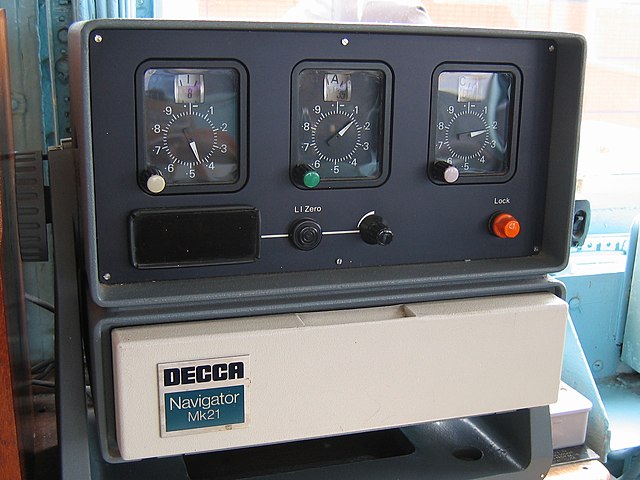The Decca Navigator System was a hyperbolic radio navigation system that allowed ships and aircraft to determine their position by using radio signals from a dedicated system of static radio transmitters. The system used phase comparison of two low frequency signals between 70 and 129 kHz, as opposed to pulse timing systems like Gee and LORAN. This made it much easier to design receivers using 1940s electronics, and operation was simplified by giving a direct readout of Decca coordinates without the complexity of a cathode ray tube and highly skilled operator.
The display panel of a Decca Navigator Mk 12 (ca. 1962). Decca position coordinates were directly displayed by four decometers and these were plotted on a conventional chart that had been over-printed with Decca lattices.
A 1967 Admiralty Decca Chart of the Thames Estuary, marked with red and green lanes and zones.
Decca Navigator Mk. 21, with the Decometer dials prominent.
Decca receiver, Mk.51 seen in the National Museum of Scotland
Low frequency (LF) is the ITU designation for radio frequencies (RF) in the range of 30–300 kHz. Since its wavelengths range from 10–1 km, respectively, it is also known as the kilometre band or kilometre waves.
An LF radio clock
Low cost LF time signal crystal receiver using ferrite loop antenna.






